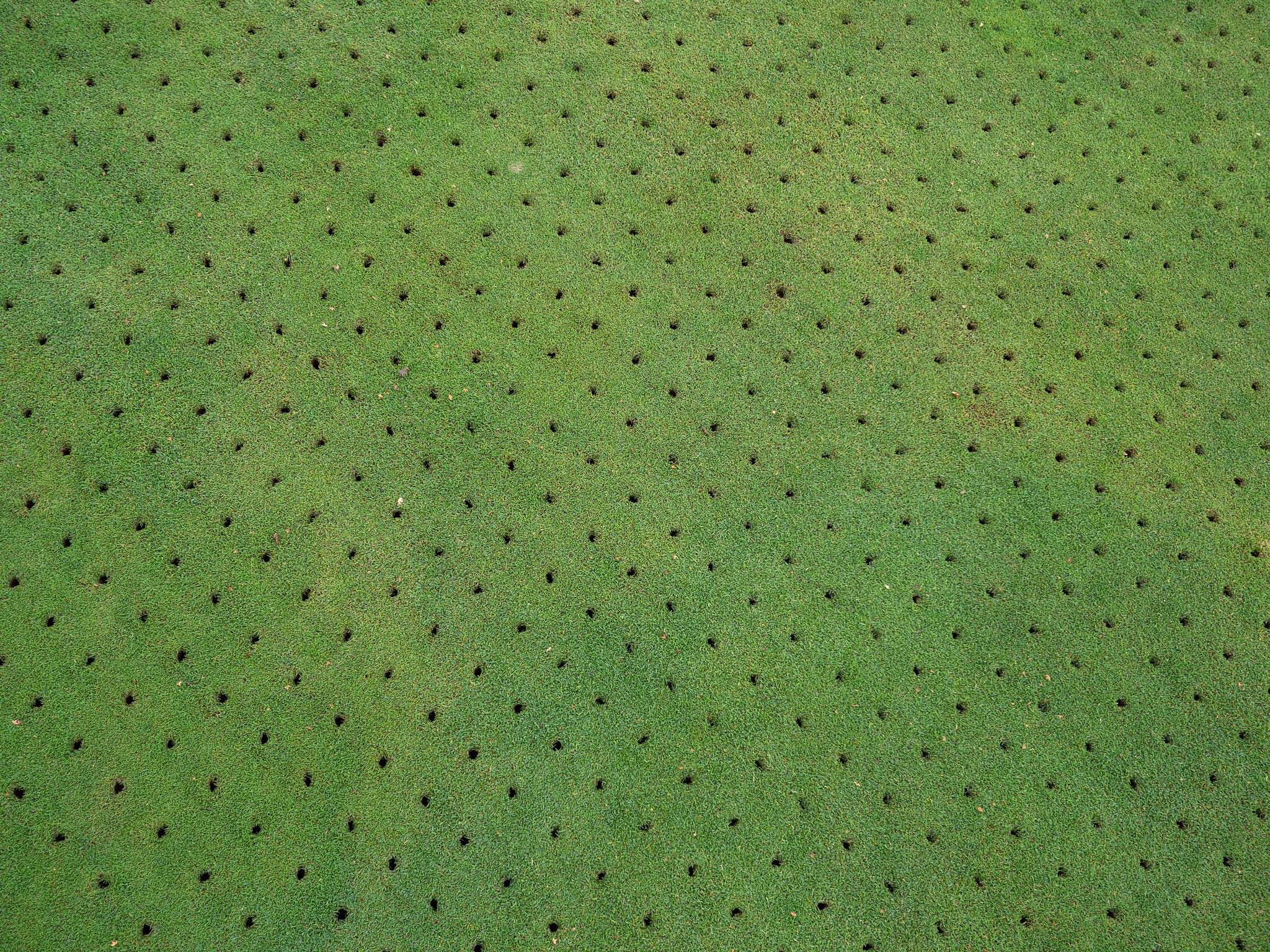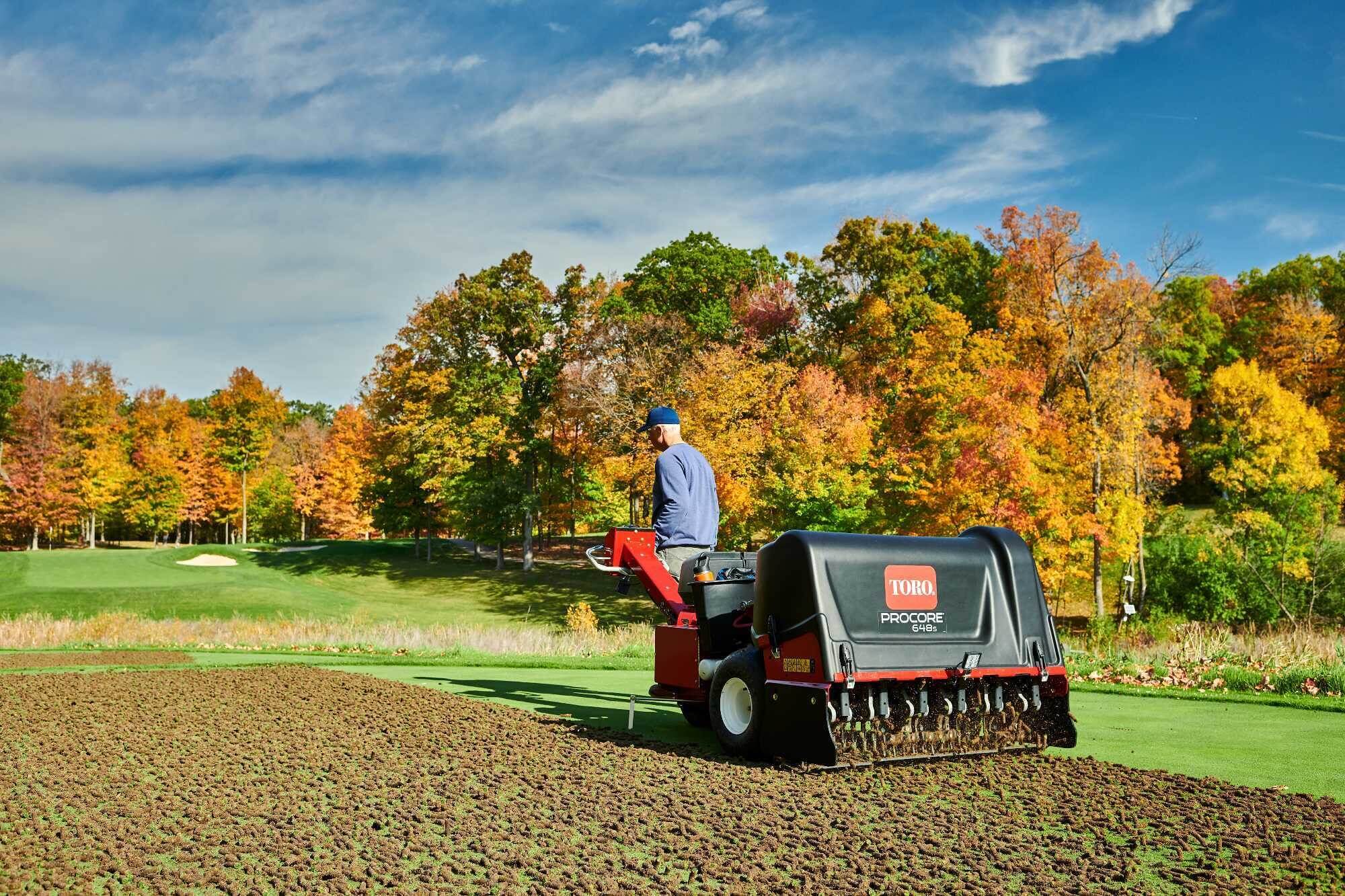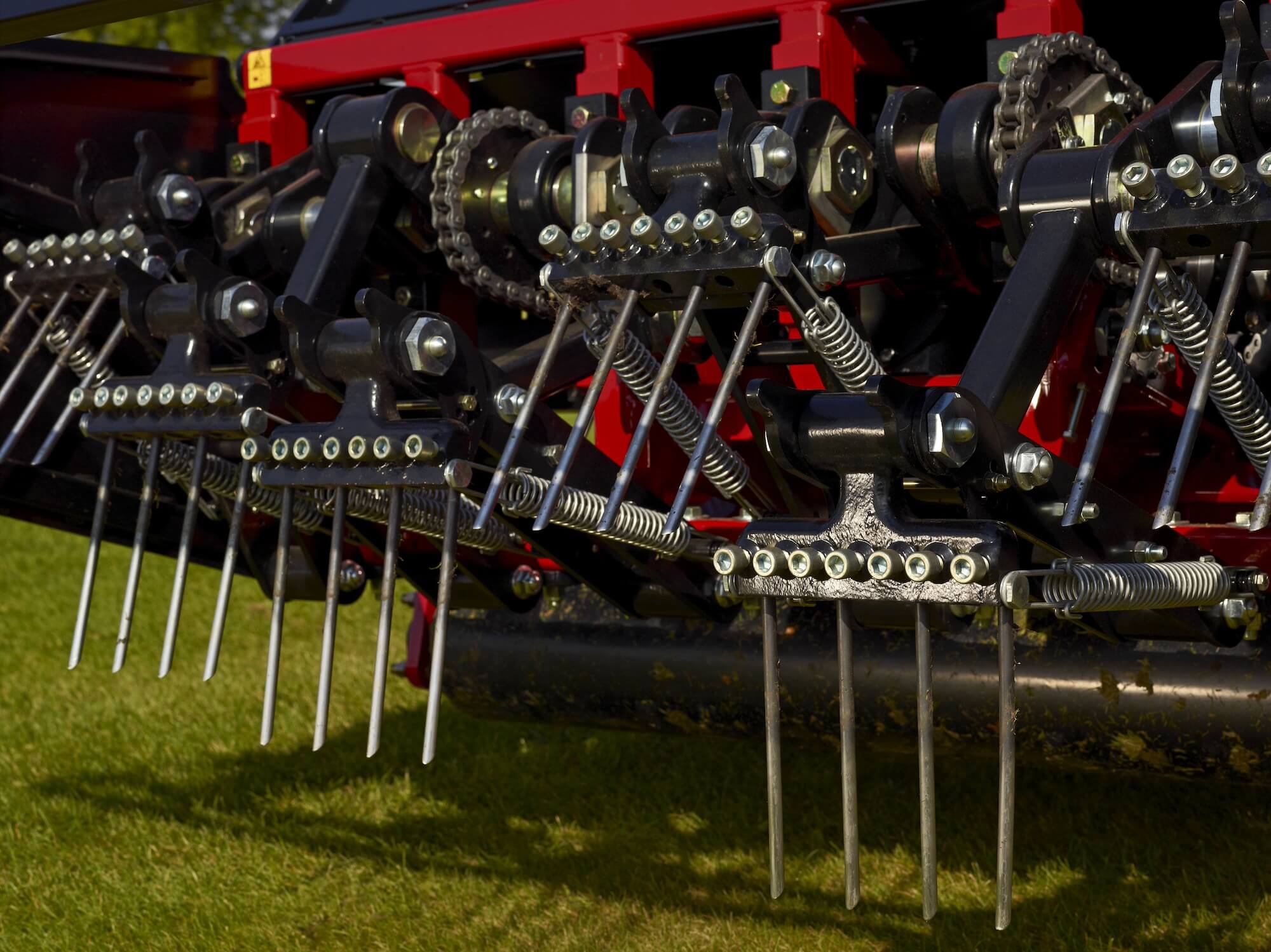Getting the most out of your tines for triumphant aeration results
How to get the most out of your tines for aeration
Aeration stands as a fundamental practice in turfgrass management offering a multitude of benefits that are essential for turf health and playability. Having the correct tines, and ones that are both durable and high-performing is essential to a smooth aeration process and a quick recovery.
On the surface, the aeration process involves perforating the soil to create channels, facilitating improved air, water, and nutrient movement within the root zone. But with a number of different aeration processes and tines to choose from, it’s important to know which to use when for the best results.

What kind of tine should I use to alleviate compaction and thatch?
One of the primary benefits of aeration lies in soil decompaction. Over time, the constant traffic and maintenance machinery on golf courses, commercial grounds and sports pitches can lead to soil becoming compacted, restricting the movement of air and water.
Hollow tines have a tube-like structure that strategically remove cores or plugs of soil from the turf. The removal of soil in this way is one of the best ways to reduce bulk density or compaction, particularly in fine-textured soils.
And for turf areas with a thatch layer, an organic layer that poses challenges to efficient water and nutrient penetration in the soil, core aeration acts as restorative practice to restore microbial activity. This process is instrumental in the decomposition of thatch, breaking down the accumulated organic material into beneficial components and promoting a healthier soil microbiome.
By physically removing parts of the soil core, aeration creates channels in the soil, promoting increased oxygen levels, water infiltration, and nutrient availability within the root zone, something that’s essential for robust and healthy turf.
When is the best time for core aeration to take place?
It should be noted, however, that core aeration does impose a certain amount of stress on the turf by the nature of it opening the turf’s canopy and removing a portion of its root mass. While the disruption may be temporary, it can have implications on the turf if not planned well, such as the soil drying out if performed in hot or windy conditions.

Because of this, it’s always best to aerify at a time during the turf’s growing season when it’s in an active growth state that can offset injury and speed up the healing process. For cool-season turf species this will be in the spring and autumn, and for warm-season species in the late spring and early autumn.
What tines should I use to enhance gas exchange?
Oxygen exchange is a critical facet of aeration. Oxygen is essential for root respiration, microbial activity and facilitating nutrient absorption and overall growth. Aeration ensures a continuous exchange of gases in the soil, preventing the development of anaerobic conditions detrimental to root health.
And the best tines to use for this job are solid tines that strategically craft holes in the soil without the removal of cores.
Depending on the application they’re needed for, solid tines can take multiple different forms. Needle – for minimal turf disruption, cross tines – to expose almost double the soil surface area to the environment, slicing tines- to limit the risk of turf damage.
But their primary concern is to enhance the gas exchange between the root zone and the wider atmosphere. As a result, solid tine aeration is typically introduced in periods where turf is stressed and root respiration is high, increasing demand for oxygen and causing an accumulation of carbon dioxide in the root zone.
The absence of removed cores reduces surface disruption allowing for a quicker recovery of the turf. It’s thus particularly valuable as a proactive measure in locations where playability and aesthetic appeal are paramount, such as golf course fairways and high-traffic sports fields.
What to consider with solid tine aeration
It’s important to keep in mind that because the process does not remove soil from the turf, it won’t reduce heavy compaction as efficiently as core aeration using hollow tines. Soil bulk density might actually increase slightly in the vicinity of the aeration hole as the tine compresses the soil around it upon entry.
What tine should be used for minimal turf impaction?
Slicing and spiking aerators, like solid tine aeration, enhance gas exchange by establishing channels into the root zone. They induce minimal turf damage, making them ideal for shallow treatments in high-traffic zones. These methods facilitate improved water infiltration, nutrient absorption, and root development, fostering healthier turf surfaces overall.
What tine is best to break through deep layers of compaction?
Deep tine aeration utilises elongated, solid tines designed to penetrate the soil to depths up to 16 inches if using an aerator such as the Toro ProCore SR72. Using both solid and hollow tines, it has become increasingly popular as a way of breaking through deep layers of compaction or encouraging root growth deeper into the soil.
It can often been implemented to address compaction created during course construction and the moving of large amounts of earth or to combat a cultivation pan (a layer of increased compaction just below the depth of aeration occuring after repeatedly aeration using a conventional 4-inch hollow and solid tines).
This method of aeration is particularly effective during the off-season or when the turf is dormant, ensuring minimal disruption to regular play and turf activities.
Durability is a must
For tines used during deep tine aeration, it is essential that they are both robust and engineered for durability, given the increased stress they undergo while penetrating the soil at greater depths. Using heat treated alloy tines means such as Toro’s TITAN tines means that even undergoing heavy applications, tines can last up to four times longer than standard tines.

Which tines to pick?
With so many factors influencing how to go about aerating your turf, it’s a good thing that there are more than 150 products in the TITAN tines lineup to meet your exact requirements, from changing seasons to even the most demanding turf conditions.
Not just that but they offer superior quality. The majority of a tine’s wear occurs at the tip, where the tine interacts with the turf the most, but with a long-lasting tungsten carbide-blend tip, tines can retain their sharp edge longer and provide a clean cut rather than tearing the plant. Something that’s essential for promoting fast healing and recovery to get courses and grounds back into tip-top shape.
The carbide tips are also brazed, to deliver a strong bond and resist separation and breakage. Ultimately what that adds up to is tremendous longevity, excellent performance and long-lasting wear in most conditions.
To learn more about Toro’s TITAN Tines, and to find out more about using genuine parts in your turfcare machines visit our Genuine parts page.
